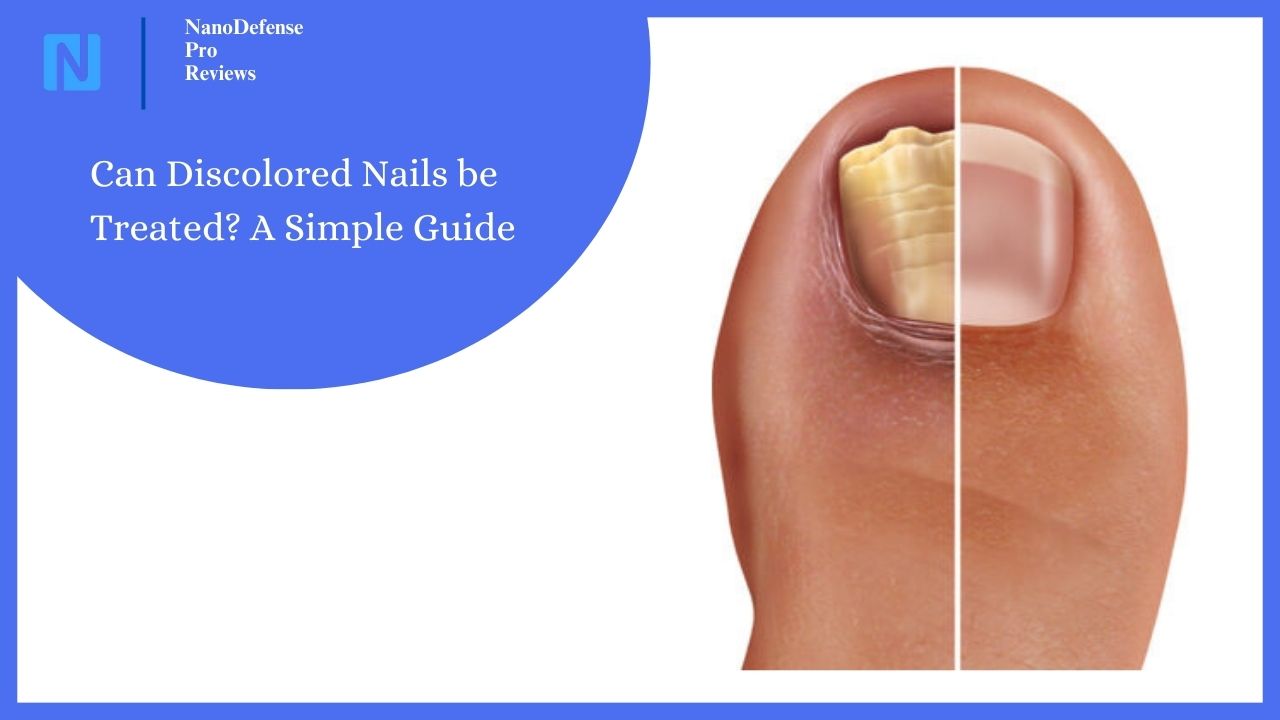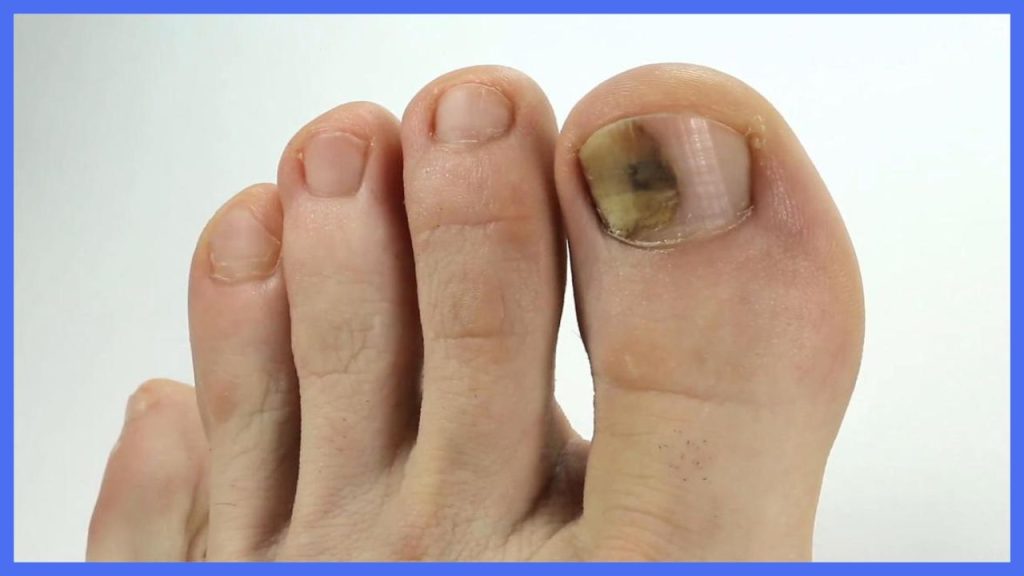Can Discolored Nails be Treated? A Simple Guide
There are numerous potential causes behind nail discoloration, ranging from fungal infections and injuries to simply using nail polish too often. One of the most common culprits is a fungal nail infection called onychomycosis, which causes nails to become thick, crumbly and stained yellow or brown as the fungus grows underneath.

Disclaimer: This article has been generated with the assistance of AI tools. While our research team has fact-checked the content, readers should independently verify information for accuracy and reliability.
Have you ever looked down at your fingernails or toenails and noticed they’ve changed color? Maybe a nail has turned yellow, brown, white, green, or even black. While discolored nails can sometimes be just a harmless quirk, other times they can signal an underlying health issue. The good news is, in many cases, can discolored nails be treated? The answer is yes!
What Causes Nail Discoloration?
Before treating nail discoloration we should understand what causes discoloration of nails. There are numerous potential causes for why nails can become discolored or stained. Some common culprits include:

Fungal Nail Infections: One of the most common reasons for yellow, brown or white streaks on the nails is a fungal infection called onychomycosis. As the fungus grows under the nail, it can cause the nail to thicken, crumble and change color.
Injuries: If you smack your nail really hard or it gets crushed in an injury, it can cause the nail to develop a black, purple or red discoloration under the nail as it bleeds internally.
- Nail Polish: Leaving nail polish on too long without giving nails a break can lead to yellow or brownish staining of the nails over time.
- Smoking: The chemicals in cigarette smoke can cause unsightly yellowish nail discoloration in smokers.
- Certain Medications: Some antibiotic drugs, chemotherapy medications and anti-malarial drugs may cause unusual nail pigmentation as a side effect.
- Health Conditions: Nail discoloration is sometimes linked to more serious underlying health issues like diabetes, thyroid disorders, kidney or heart disease.
So in most cases, discolored nails have an identifiable cause that may require treatment. Let’s look at some options for treating these unwanted stains and pigmentation changes.
Treating Fungal Nail Infections
If the nail discoloration is due to a fungal infection, there are a few different treatment approaches a doctor may recommend as per Harvard Health:
- Oral Antifungal Medications: Pills like terbinafine or itraconazole help fight toenail and fingernail fungus from the inside out. You’ll need to take medication for several months to fully eliminate the infection.
- Topical Antifungal Solutions: Special nail lacquers and solutions containing antifungal medication can be painted onto the affected nails to gradually get rid of the fungus over time.
- Nail Removal: In severe cases, the invaded portion of the nail may need to be surgically or chemically removed to get rid of the infection before allowing the new nail to grow back clear.
Home Remedies for Discolored Nails
- Tea tree oil: Tea tree oil has antifungal and antibacterial properties. Apply tea tree oil to the affected nails twice a day.
- Vinegar: Vinegar has antifungal properties. Soak the affected nails in a solution of equal parts vinegar and water for 15 minutes a day.
- Baking soda: Baking soda can help to remove stains from the nails. Mix baking soda with water to form a paste and apply it to the affected nails.
- Lemon juice: Lemon juice has bleaching properties. Apply lemon juice to the affected nails and let it sit for 10-15 minutes before rinsing it off.
It can take quite a while for a new, clear nail to grow in after treating nail fungus. But with diligent treatment, discolored fungal nails can absolutely be cleared up.
Can Discolored Nails be Treated? Preventing Future Nail Stains
For other cases of nail discoloration not caused by fungus, the key is identifying and avoiding whatever is leading to the staining or pigment changes in the first place.
For example, kicking the nail-biting habit or wearing nail polish in moderation can prevent further staining. Using professional-grade nail polish and remover formulas that are kinder to nails also helps stop discoloration.
- If certain medications are the culprit, speak to your doctor about potentially switching medications or dosages to eliminate that side effect.
- For those who smoke, quitting smoking will not only improve the appearance of nails but provide many other immense health benefits.
- If an underlying condition like diabetes is leading to nail changes, properly treating and managing that health issue can help restore nails back to their normal color.
Sometimes, a simple thing like using a styptic pencil to seal any cracks or tears in the nail can prevent discoloration from recurring as well.
Camouflaging Discolored Nails
While you’re treating the underlying cause, you may want to take some steps to camouflage or cover up any unsightly discoloration on fingers or toes in the meantime. A professional nail buffing to remove stained nail surfaces can instantly brighten nails. Nail polishes, particularly darker shades, can also do a good job of concealing discoloration. For toenail issues, wearing closed-toe shoes or nail polish is an easy fix for hiding nail problems. You can even use a clean whitening toothpaste to whiten yellowish toenails if they’re visible.
Don’t lose hope if you’re dealing with nail discoloration at the moment, as there are many things that can be done! Let’s summarize some top treatment strategies: Can Discolored Nails Be Treated? Yes! Fungal Infections: Treat with oral or topical antifungal medications, or nail removal Injuries: Allow discolored nails to grow out, use nail polish/artificial nails Staining (Nail Polish, Smoking, Medications): Avoid triggers, try whitening toothpaste Health Issues: Treat underlying condition like diabetes to clear nails.
Conclusion
In many cases, they can be treated. The treatment for discolored nails depends on the underlying cause. If you’re concerned about discolored nails, see a doctor. They can determine the cause and recommend the appropriate treatment. In addition to medical treatments, there are also some home remedies that may help with discolored nails. Products like NanoDefensePro can help in keeping toenail fungus away, But make sure to consult your physician before taking any medication or treatments. Keeping your nails clean and dry, wearing gloves, and not sharing nail tools can also help prevent discolored nails.

Lisa Miller
Dr. Lisa Miller is a board-certified Dermatologist with over 15 years of experience treating a wide range of skin, hair, and nail conditions. She received her medical degree from the prestigious Columbia University College of Physicians and Surgeons and completed her dermatology residency at the University of California, San Francisco, one of the top dermatology training programs in the country. Dr. Miller is an active member of the American Academy of Dermatology and has authored numerous peer-reviewed articles and book chapters on the latest advancements in dermatological care. She is frequently invited to speak at national and international medical conferences, sharing her expertise with other clinicians. In her private practice, Dr. Miller takes a patient-centered approach, collaborating closely with each individual to develop customized treatment plans. She is passionate about empowering her patients to achieve optimal skin, hair, and nail health through a combination of the latest medical therapies and lifestyle recommendations.
